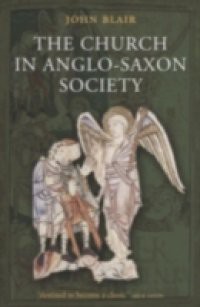From the impact of the first monasteries in the seventh century, to the emergence of the local parochial system five hundred years later, the Church was a force for change in Anglo-Saxon society. It shaped culture and ideas, social and economic behaviour, and the organization of landscape and settlement. This book traces how the widespread foundation of monastic sites ('minsters') during c.670-730 gave the recently pagan English new ways of living, of exploitingtheir resources, and of absorbing European culture, as well as opening new spiritual and intellectual horizons. Through the era of Viking wars, and the tenth-century reconstruction of political and economic life, the minsters gradually lost their wealth, their independence, and their role as sites ofhigh culture, but grew in stature as foci of local society and eventually towns. After 950, with the increasing prominence of manors, manor-houses, and village communities, a new and much larger category of small churches were founded, endowed, and rebuilt: the parish churches of the emergent eleventh- and twelfth-century local parochial system. In this innovative study, John Blair brings together written, topographical, and archaeological evidence to build a multi-dimensional picture of whatlocal churches and local communities meant to each other in early England.

